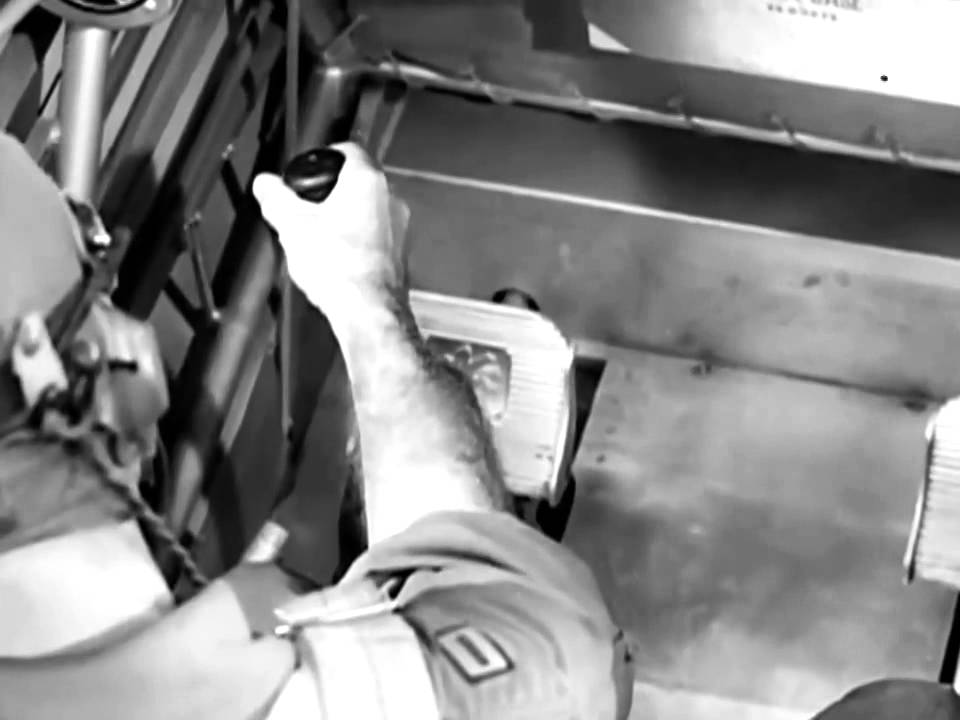more at
“Describes the fundamental techniques and common errors in such maneuvers as simple loop, half roll, reverse, Immelmann, snap roll, slow roll, and vertical reverse.”
US Army Air Forces Training Film TF1-505
USAF Training Film playlist:
Pilot Training playlist:
Public domain film from the US National Archives, slightly cropped to remove uneven edges, with the aspect ratio corrected, and mild video noise reduction applied.
The soundtrack was also processed with volume normalization, noise reduction, clipping reduction, and/or equalization (the resulting sound, though not perfect, is far less noisy than the original).
Aerobatics is the practice of flying maneuvers involving aircraft attitudes that are not used in normal flight. Aerobatics are performed in airplanes and gliders for training, recreation, entertainment, and sport. Additionally, some helicopters, such as the MBB Bo 105, are capable of limited aerobatic maneuvers. The term is sometimes referred to as acrobatics, especially when translated.
Most aerobatic maneuvers involve rotation of the aircraft about its longitudinal (roll) axis or lateral (pitch) axis. Other maneuvers, such as a spin, displace the aircraft about its vertical (yaw) axis. Maneuvers are often combined to form a complete aerobatic sequence for entertainment or competition. Aerobatic flying requires a broader set of piloting skills and exposes the aircraft to greater structural stress than for normal flight. In some countries, the pilot must wear a parachute when performing aerobatics.
While many pilots fly aerobatics for recreation, some choose to fly in aerobatic competitions, a refereed sport…
Basic fighter maneuvers (BFM) are tactical movements performed by fighter aircraft during air combat maneuvering (also called ACM, or dogfighting), in order to gain a positional advantage over the opponent. BFM combines the fundamentals of aerodynamic flight and the geometry of pursuit with the physics of managing the aircraft’s energy-to-weight ratio, called its specific energy. Maneuvers are used to gain a better angular position in relation to the opponent. They can be offensive, to help an attacker get behind an enemy, or defensive, to help the defender evade an attacker’s weapons. They can also be neutral, where both opponents strive for an offensive position, or disengagement maneuvers, to help facilitate an escape…
Basic fighter maneuver development began during World War I, with maneuvers such as the “Immelmann”, named after German pilot Max Immelmann, the “break”, and the “barrel roll”. However, the modern Immelmann differs from the original version, which is now called a stall turn or “Hammerhead turn”. The original Immelmann was an effective maneuver in the early part of the war, but as aircraft technology advanced, and fighter engines became increasingly more powerful, it became a dangerous maneuver, because the opponent could climb and shoot the German fighters when they were almost motionless at the top of the turn.”
Billy Bishop, the top Canadian ace of World War I, described a break:
Watching carefully over your shoulder and judging the moment he will open fire, you turn your machine quickly so as to fly at right angles to him. His bullets will generally pass behind you during the maneuver.
During World War I, due to the low power of early aircraft, the most common type of engagement was known as a Lufbery, which consisted of two fighters chasing each other around the same circle, often 180 degrees apart. This type of engagement, however, is energy-depleting, causing the fighters to lose altitude until they run out of maneuvering room. This type of fight became a game of chicken, forcing one fighter to attempt an escape before crashing into the ground, and giving the advantage to the other. As engines became more powerful, three-dimensional tactics became available to counter the stalemate of the Lufbery, allowing fighters to maneuver onto the tail of their opponents.
Development continued through each consecutive war, as aircraft and weapon systems became increasingly more advanced. Maneuvers such as the “combat spread” were first devised by pilots like Werner Molders during the Spanish civil war, while the energy-managing maneuvers called the “high and low Yo-Yos” were credited to a Chinese pilot named Yo-Yo Noritake, during World War II.

